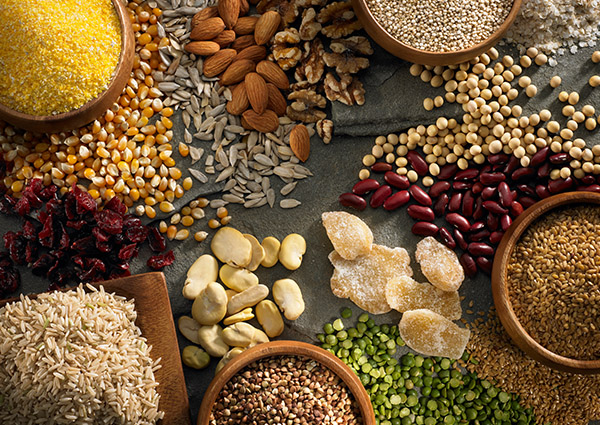
Gluten-Free: Is it For Me?
Gluten is a protein found in wheat, barley and rye. It’s also found in many types of oats, which are likely to become cross-contaminated at the point of harvest. Any foods made with these ingredients will contain gluten, including wheat and rye breads and pastas, baked goods made with wheat flour, and even most types of beer. Some food additives and ingredients may contain gluten, such as malt flavoring or wheat dextrin. For the 1 in 133 Americans with celiac disease, understanding which foods are gluten-free is critical.
Celiac disease is considered an autoimmune disorder brought on by consuming gluten. It can manifest itself in a variety of ways, and if gone unattended, can cause serious detriment to the sufferer. When an individual with celiac disease eats a gluten-containing food, his or her body will mistake the gluten for an invader and initiate an immune response, causing damage the intestinal lining. Over time, this damage restricts the body’s ability to absorb nutrients from any food. The only course of treatment is a strict gluten-free diet.
The U.S. Food and Drug Administration (FDA) developed “gluten-free” labeling standards for food products. Any product labeled “gluten-free” is expected to contain less than 20 parts per million of gluten, which is currently the lowest level which can be detected. Label reading is an important skill when avoiding gluten, as not all gluten-free products necessarily carry a gluten-free claim.
While a strict gluten-free diet is generally necessitated by a medical diagnosis such as celiac disease, everyone can benefit from using “gluten-free” ingredients occasionally. Nutritionally speaking, there are advantages to including naturally gluten-free foods into your dietary pattern, as this encompasses nutritious choices such as fruits, vegetables, lean meats and seafood and low-fat dairy. Gluten-free cuisine also encourages consumption of new and varied grains, which may be higher in fiber, protein or certain vitamin and minerals. In short, a diet that includes a variety of foods not only supports a full range of nutrition, but also a full range of flavor. As an added bonus, the tastes, textures and visual appeal of unique grains and ingredients means a greater enjoyment of food and cooking. Here are a few examples of gluten-free swaps that also provide a nutritional boost:
- Romaine lettuce wraps in place of wheat tortillas for more vitamin A and less sodium and calories
- Nuts and seeds in place of salad croutons for more fiber, protein and heart-healthy fats
- Toasted, cooked quinoa in place of traditional breadcrumbs for higher protein and fiber
- Millet in place of wheat pasta in soups for a boost of key minerals like manganese and copper
Next time you’re curious about using a wheat- or gluten-free ingredient, give it a try. New flavors are a delicious way to achieve better health!




